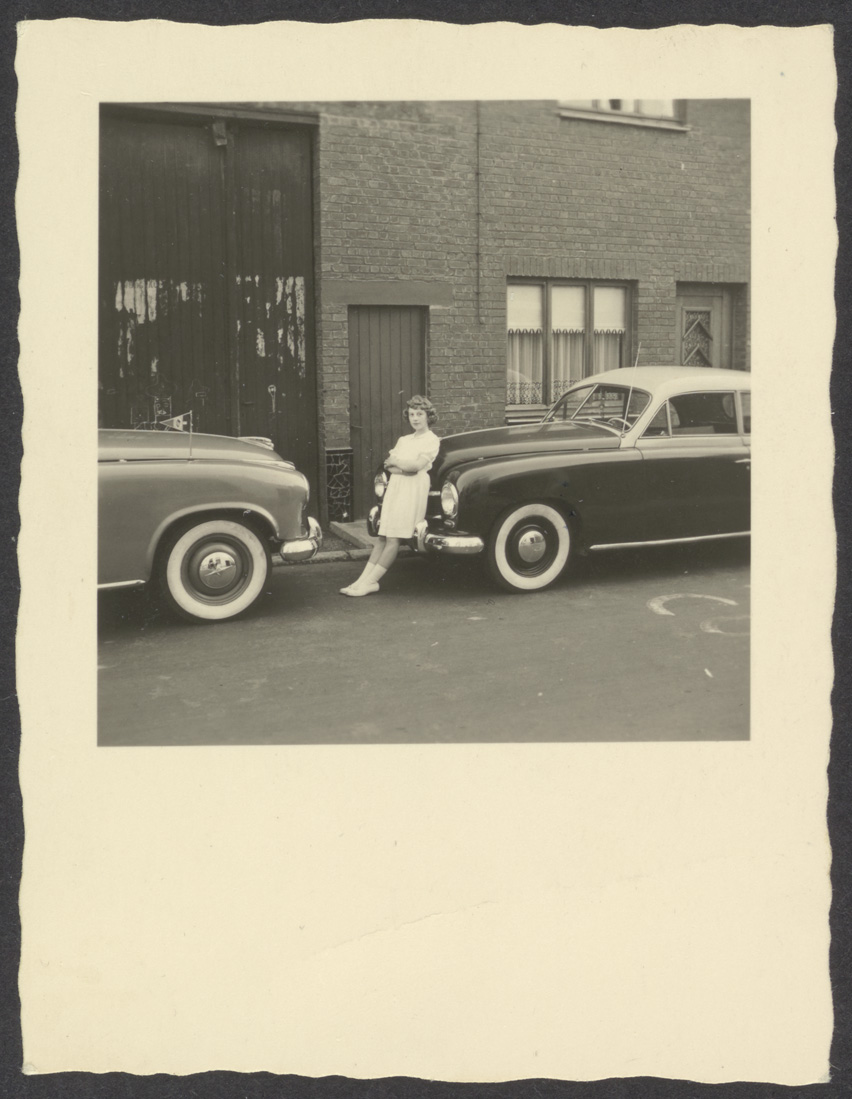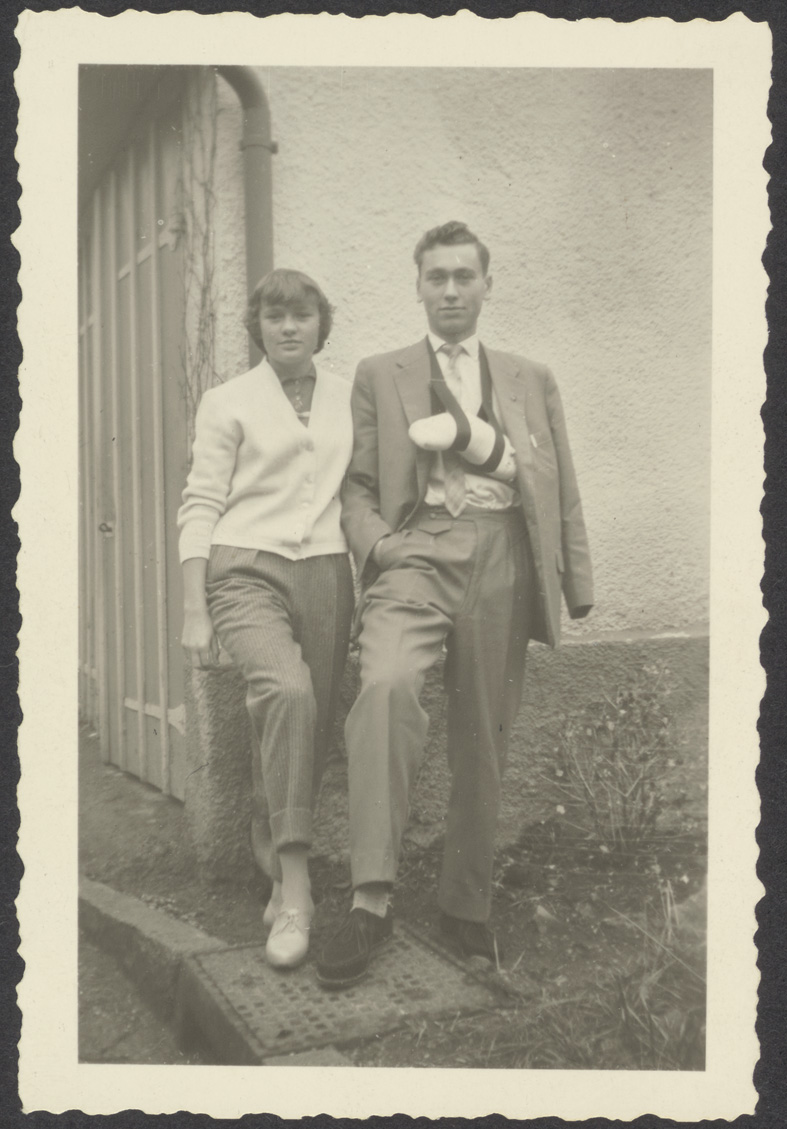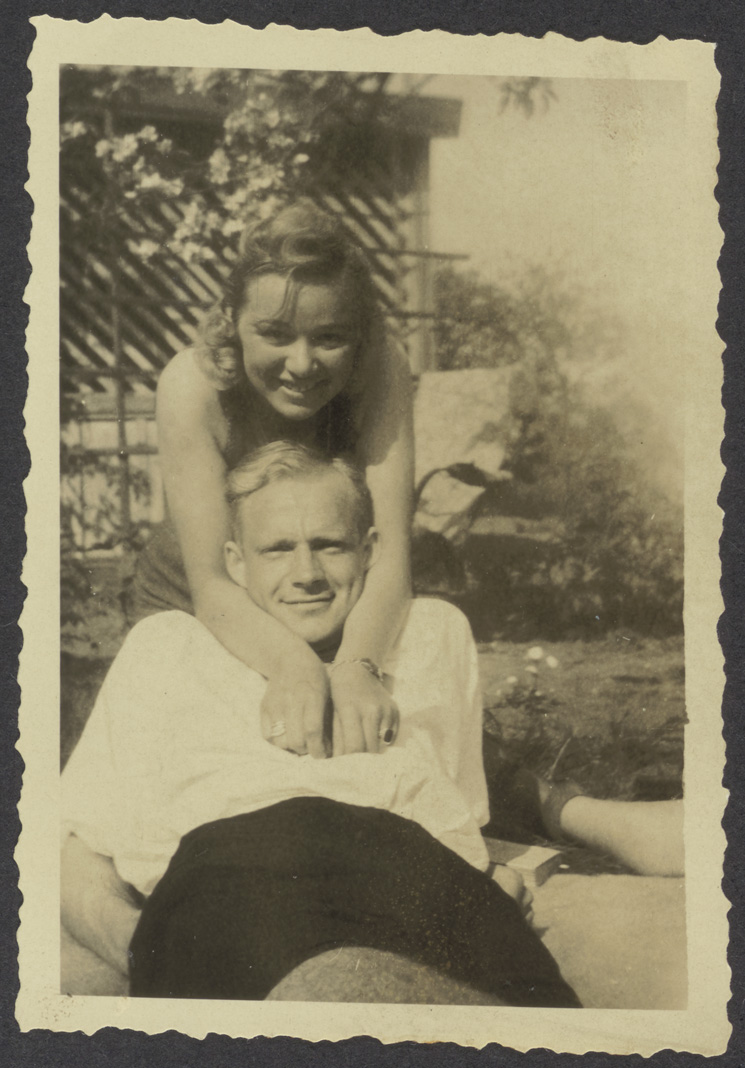Puzzles
I’ve met a fair number of people over the last 25 years who collected photographs for various reasons. You can put them into all kinds of categories: the ‘moderates’ and the ‘hardliners’; with a large or small purse; specialising in a specific niche or ‘omnivores. Some display symptoms of addiction, while others remain in complete control of themselves. Some like to show off their collection, others are more reserved.
Whenever you get the chance to view a private collection, you’re not just curious about the photos themselves, but also about what drives the collector concerned. Sometimes their motivation is obvious, but in some cases it requires some explanation.
It was when I visited IHLIA in early 2022 that I first heard about the photograph collection compiled by Gerrit Jan Vos (1962-2017). Four thousand photographs, mainly of men in uniform, including some from the Second World War. That sounded like an interesting area for a collection, almost a niche within a niche, and at the very least a topic that for a long time had been shrouded in secrecy and taboos. My curiosity was aroused. Someone who had spent years (?) engaged with that topic must have been a collector who knew what he was doing. An (almost) exclusive interest in German soldiers during the Second World War suggests more than an average fascination and desire to collect.
Several books have been published in recent years on photographs of German soldiers, some but not all of which devote specific attention to their sexual preferences. There was Gerard Groeneveld’s book in 2007 containing German amateur photographs taken during the occupation of the Netherlands (Heinz in Holland: Duitse amateurfoto’s van de bezettingstijd), published to accompany an exhibition in the Rijksmuseum, which is how I came to hear about it. It was followed 11 years later by Laura Fahnenbruck’s Ein(ver)nehmen; that was also concerned with German soldiers in the occupied Netherlands, but with a particular focus on what the book’s subtitle describes as Sexualität und Alltag von Wehrmachtsoldaten in den besetzten Niederlanden (‘Sexuality and everyday life for Wehrmacht soldiers in the occupied Netherlands’). The sexual relations discussed in these two books were those between German soldiers and Dutch women and girls, rather than between the soldiers themselves. During that same year (2018), Erik Kessels’ Shit was published, in which this famous collector of amateur photos brought together images of defecating German soldiers. Once again, a niche within a niche (within a niche).
Gerrit Jan Vos’ collection would therefore seem to fit in with a tradition, though admittedly a fairly young tradition: for a long time it was not done to show an interest in German soldiers, but today we are more aware than in the past that these were often young men who, especially if they were part of the Wehrmacht, were sent off to fight and suppress the population of another country, without knowing what they were doing or having the power to decide what they did and didn’t want to do. The fact that Wehrmacht soldiers weren’t all simply bastards, but were also people of flesh and blood who possessed human qualities and had all kinds of everyday worries, was something that took a long time to become accepted.
When I was invited by IHLIA LGBTI Heritage to write something about the Vos collection, I decided that I should first look at all four thousand photographs. I cheerfully set about the task one Monday morning at work, with around 15 boxes on the table in front of me. Experience shows that when you look at that many photographs, you always come across surprises, photos whose existence you hadn’t suspected.
It didn’t take long for the first question marks to arise. My assumption had been that I would come across lots of photos with a home-erotic character, but in fact I encountered lots of pictures of women and children (with or without a man in the picture), men in civilian clothes and also snapshots of outings that had nothing to do with war. After having looked at all four thousand pictures, I concluded that there was indeed a relatively high proportion of uniformed men among them, and lots of Germans from around the Second World War, but also a strikingly large number of photographs that did not fit into that category. Usually, sometimes thanks to notes from the collector themselves, I’m able to discover a pattern, but here I was mainly left with questions.


Since Gerrit Jan Vos was dead, I obviously couldn’t ask him, so I had to look for answers in the photos themselves. That’s not uncommon; collecting photographs is a young ‘discipline’, which means that not much has been written about collectors in this field, and especially those from the more distant past. Often you know little more than their name.
Photos of military personnel are overrepresented in the Vos collection, then, but not to the exclusion of all other topics. What drove Gerrit Jan Vos, and what were the limits of his collecting interests? Was it the Second World War? German soldiers? If that were the case, you would expect all those other topics – women, children, non-military outings, and so on – to have been set aside, given away or thrown in the bin. Why didn’t that happen? Did he really intend to exclude those other categories? In other words, did Vos really have such a strong interest in war, soldiers and uniforms?
Did Vos simply not get round to separating out the military photographs from the rest? He did after all die fairly suddenly in 2017 at a relatively young age. But if that were the case, how can we know that his main interest was in the homo-erotic element of the soldier’s life? Did Vos himself choose IHLIA as the heir to his photographic legacy? If so, that could provide a hint, given that IHLIA has a specific mission and published a catalogue in 2006 (Wie kan ik nog vertrouwen? [‘Who can I still trust?’]) for the eponymous exhibition about homosexuals in Nazi Germany and occupied Holland. It would then be no coincidence that Vos chose IHLIA to be the guardian of his collection. No such luck, however: it was a good friend of Gerrit Jan who after his death suggested to his family and partner that the photos be given to IHLIA.
Vos didn’t try to sell his collection, but that needn’t have been because of embarrassment or anxiety; rather, the stories about Vos give the impression that he wanted to keep the collection for himself. According to his partner, he regularly looked at the photos without talking about them to others and without allowing them to look. He doesn’t seem to have been affected by the vanity that characterises many collectors; while many private collectors are full of what they have collected over the years, like to talk about it, like to know whether their collection is better than other people’s collections (and sometimes simply presume that to be the case), dream secretly (or openly) that their collection will one day end up in a prestigious institute, find the chase to collect photographs more interesting than possession of them, or find reward in organising, selecting and cataloguing their collection, Gerrit Jan Vos appears to have collected purely for his own pleasure.
What is in any event clear that no organising, selecting or cataloguing was carried out. IHLIA received the more than four thousand photographs in a number of shoeboxes. Such organisation and classifying into categories as had taken place, and which I found on that Monday morning, was done by IHLIA. Inside the shoeboxes, the photographs were all mixed together.
That once again begs the question of why, if he was so fascinated by men in uniform, Vos had not simply separated out or even got rid of the rest. It can hardly have been due to a lack of time: if he took the trouble to remove photos from albums (as evidenced from the backs of the pictures), it would not have taken any more time to throw away the uninteresting photographs than it did to mix them up with the interesting ones in shoeboxes.
I don’t have an answer, and I’m left with the question of what drove Gerrit Jan Vos. Or was it other people (his bereaved partner, the friend who suggested giving the photos to IHLIA) who believed that the homo-erotic elements of the military photographs were the key aspect? If Vos had got hold of an arbitrary number of photo albums and simply removed everything from them, there would not have been so many photographs of soldiers among them. So it seems those soldiers must have been of particular interest to him.
One thing that many collectors share is the pleasure, after visiting a fair, auction, market or house, of spreading out and viewing their ‘booty’. The collector has no idea in the morning what they are going to come across that day, and now they find themselves with something that they couldn’t let go for any amount of money. That moment in the day is magical.
Gerrit Jan Vos, too, may have felt that euphoria on several occasions. Perhaps that is where the solution to the puzzle lies. Once the new acquisitions have been organised, incorporated in the existing collection and described, that euphoria evaporates and the new acquisitions have simply been absorbed as part of what already existed. Perhaps, by deliberately not separating the photos that interested him most from all the others, by repeatedly going through the entire, unsorted collection, he may have been able to experience that feeling of excitement time and again. Perhaps the collection only existed in his head.
It’s a nice idea, if I do say it myself, but I will also be the first to admit that it’s not a watertight explanation. But then, collectors aren’t your average person, so an improbable working method and train of thought is perfectly feasible, just as some collectors regularly focus on unconventional topics for their collection. This is not a type of collector with which I was familiar at the time, but I will gladly add it to the list of private collectors with whom I have become acquainted over the last quarter of a century.

